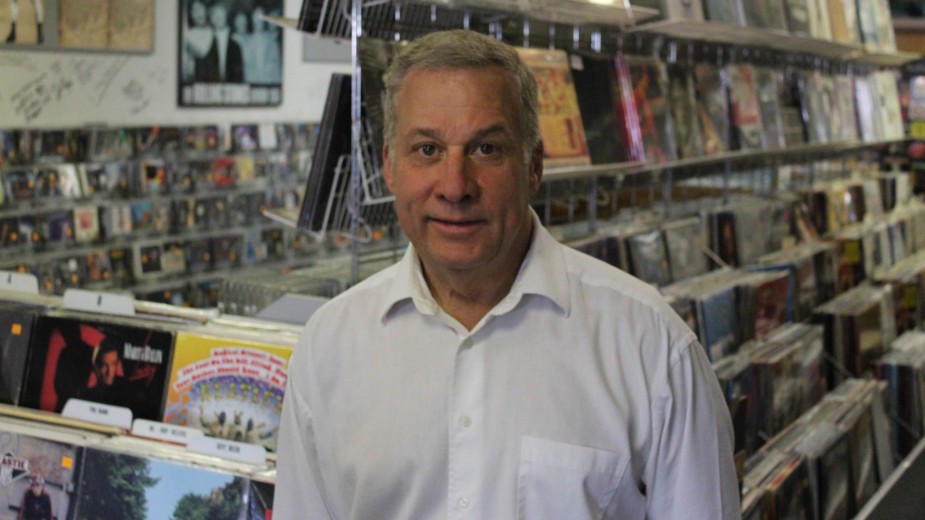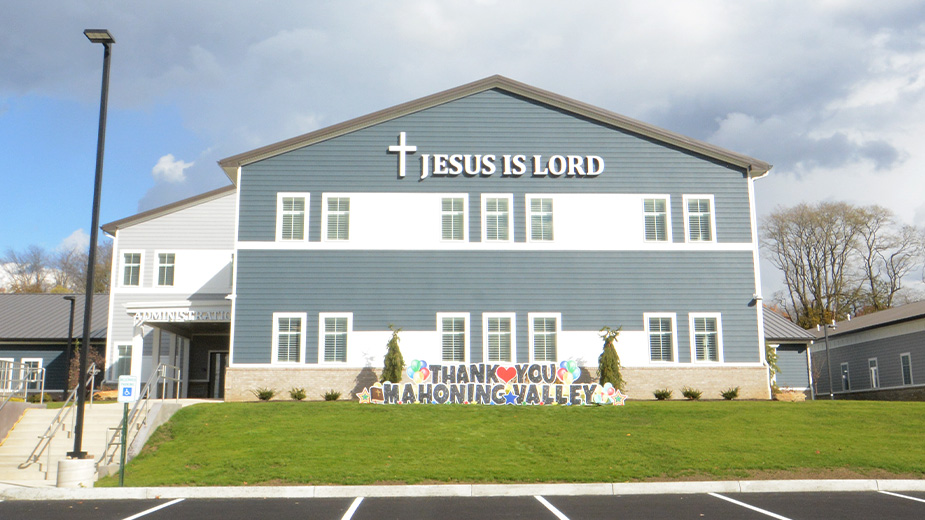Record Stores Fight Streaming Music to Sell Vinyl
YOUNGSTOWN, Ohio — It was two years ago that Niles held its biggest concert ever. On Record Store Day in 2014, The Record Connection hosted the Foo Fighters. Tickets were limited to the first 150 people in line, but the plaza that houses the record store was more than filled to capacity.
“It breathed new life into this store,” says owner Jeffrey Burke of the concert.
Because of events like Record Store Day – which began in 2007and has helped with the resurgence of vinyl’s popularity – record stores have seen new customers and increased sales.
It was around that time as well that George Case, owner of Geo’s Music in downtown Youngstown, was weighing whether to close his store after nearly 20 years. The demand for records helped save his store, he says.
While sales of physical music (vinyl records, CDs and DVDs) fell last year – the number of units was down nearly 11% to 161.7 million and sales fell 10% to $2.1 billion – vinyl albums were the only category to see an increase, data from the Recording Industry Association of America show. Among the three categories – singles, LPs and EPs – volume increased 27% to 17.4 million and sales totaled $422.3 million.
The numbers, the RIAA reported, were the highest for vinyl since the late 1980s, bolstered by chain stores such as Barnes & Noble and Hot Topic – even Whole Foods – adding and expanding record sections. Chains often carry a mix of rock ’n’ roll classics and modern hits. Vinyl, it seems, is as popular now as any time in recent memory.
But for independent record stores, the surge in popularity has begun to level off.
“It’s become more of a collector’s market. You’ve always had people who don’t care one way or another how they get their music,” Case says. “They buy a piece here and there that’s new. If you want to collect vinyl, it’s not cheap.”
It’s not uncommon for customers to buy one new album, usually by an artist they’re passionate about, and a few used records, he says. Prices of new records hover around $20, although bigger artists and re-pressings of classic albums can jump into the $40 range.
Most buyers of vinyl – who are generally younger, record storeowners notice – are looking for older music, whether new or used copies. Nearly every album that comes out is released on vinyl, however.
“Kids were nonexistent in this store from the early 2000s to around 2007. But with albums, kids are coming back,” Burke says. “We have customers who are 12 or 13. It’s amazing that they even have the money to put down on a new album, which isn’t cheap.”
As he discusses his store, a group of high school students looks through bins of used albums from The Doors and Elvis. They end up buying four or five, mostly Elvis and one Frank Sinatra record.
The appeal, he continues, is because records – and occasionally CDs – offer something tangible. The covers feature artwork and the liner notes provide information beyond who’s in the band or a biography of the artist.
“You can sit down and read it. You can see who all the performers were or who the producer was. You don’t get that with the digital stuff,” Burke says. “We’ve always believed that you have a piece of artwork.”
“It’s pretty much classic rock, but also some blues and jazz, though they aren’t our best-selling items,” says Sonny Hrehovcik, owner of Underdog Records in Hubbard. “R&B and funk are also in here. If people ask for certain things, then we can go out and find what they’re looking for.”
Hrehovcik regularly attends expos in Cleveland and Pittsburgh to find records for his store.
Keeping a mix of used and new records is crucial to running a store, Case adds, as is knowing the musical tastes of the market.
“You have to be selective. I’ve seen people start stores and, if they don’t know what to stock, they end up overspending and wasting,” Case says. “You do get stuck with some products sometimes, but if you know your product and your core people, you can turn it over.”
Part of running a music store, he continues, is being able to make suggestions and recommendations based on what customers are buying or looking for.
As he flips through his sale sheet, Case picks a date and reads off what used-records customers have bought line by line: Prince, James Brown, Lil’ Wayne, Green Day, Tupac, George Michael and Madonna.
“It’s really all over the place around here,” he comments.
At Record Connection, Burke keeps a section of counter space open for CDs from local bands. The store occasionally hosts small concerts as well.
“We take a chance on new artists and try to find things that are ‘hot but not,’ ” he says. “We like to push local bands and that’s what keeps us unique and niche-like.”
As does any store, the trio agrees, business is in a perpetual state of flux. Some weeks are slow while some days bring in a constant flow of people.
“It’s just like Sears or Macy’s,” Hrehovcik says matter-of-factly. “Sometimes it’s person after person. Sometimes there’s nobody in here.”
Adds Burke, “I’ve seen a downturn since the beginning of summer, around Memorial Day. Summers are typically slow but the business still zigzags.”
One adjustment Burke made at Record Connection, he says, is once again expanding the stock of CDs. As chain stores get into selling music, that pulls business away from his store, but they generally stick to the top couple of hundred albums. Burke’s collection is “deep catalog.” It reaches, he says, into the artists in the bottom half of the top 1,000.
“We’ve built up our CD collection again because for most big sellers of music, it’s a secondary market of theirs. They adopt the top 300 and that’s all they carry,” he says. “There’s an upswing coming for us because of that.”
Pictured: Vinyl buyers, old and young alike, tend to gravitate toward classic artists such as The Beatles, Jimi Hendrix and Elvis Presley, says Record Connection owner Jeffrey Burke.
Copyright 2024 The Business Journal, Youngstown, Ohio.



